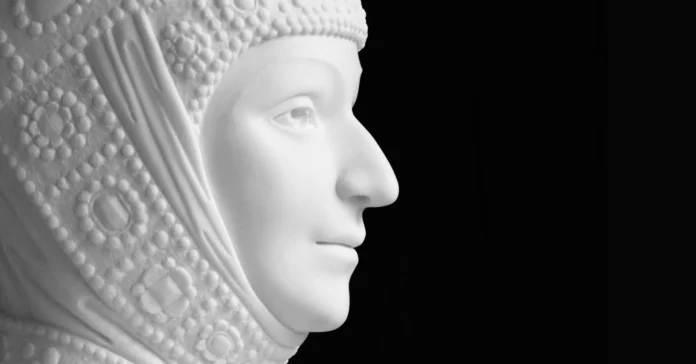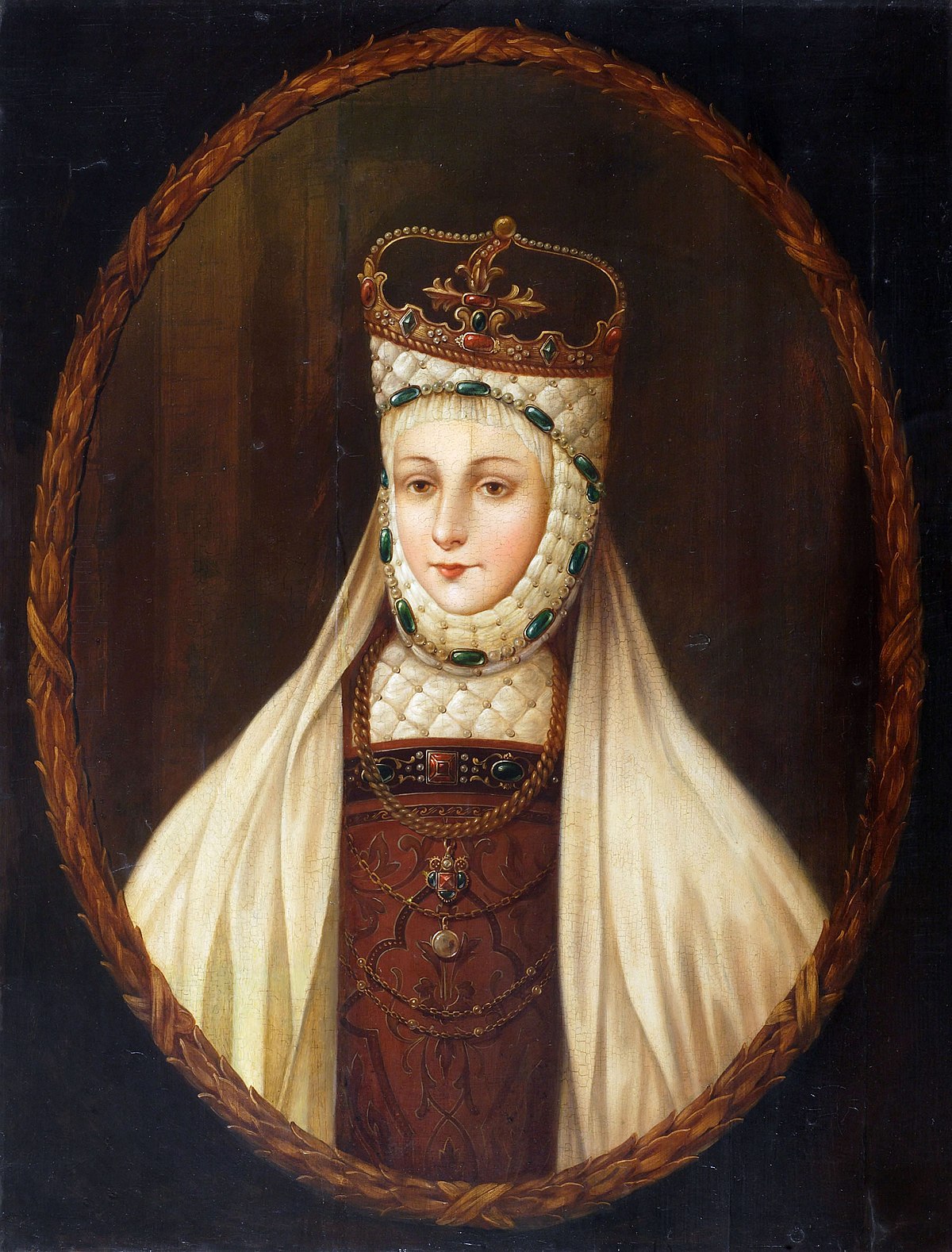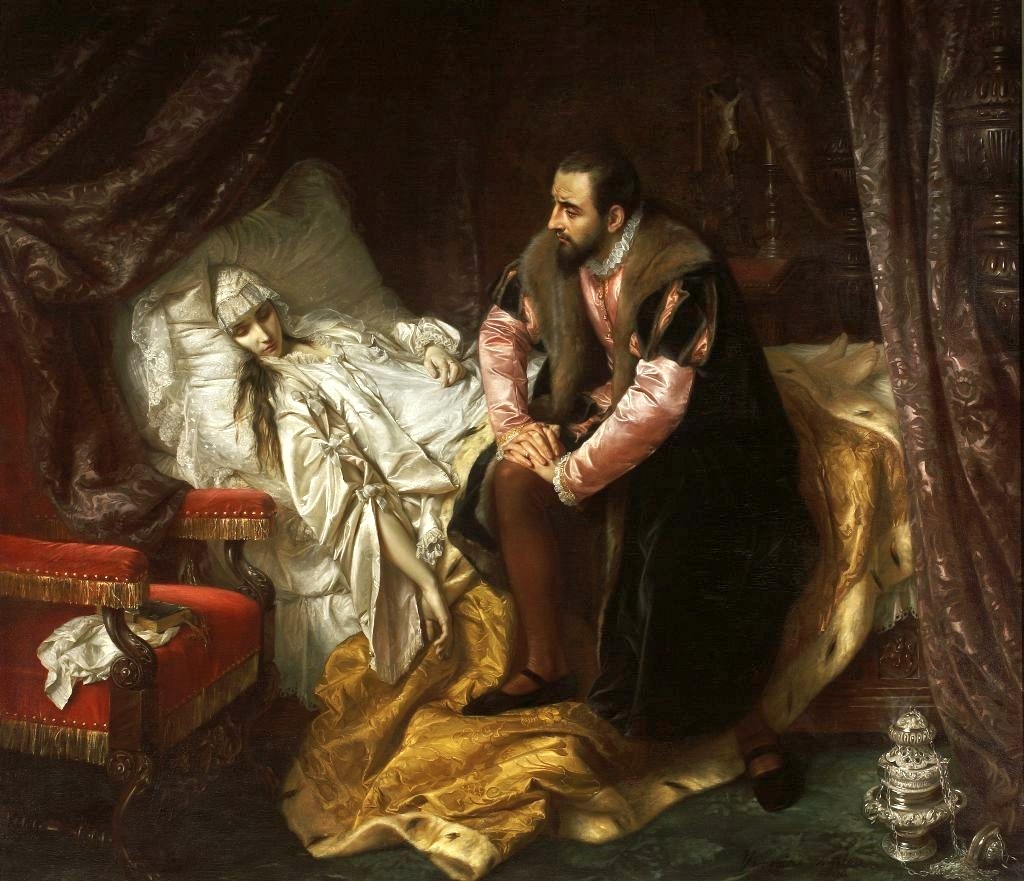
A Story for December
On December 6, Lithuanians commemorate the 500th anniversary of the birth of Barbora Radvilaitė and her beloved husband Žygimantas Augustas, king of Poland and Grand Duke of Lithuania. This year the Church Heritage Museum opened a special exhibition “Barbora etc.” at the bell tower of Vilnius Cathedral, in the form of a stylized chest of drawers that could have belonged to Barbora. Its 24 drawers represent different aspects of the noblewoman’s life. For example, one of them invites visitors to feel the textures of the pearls and textiles worn by the queen, another – to smell the medicinal mixtures made for her by her doctor or to learn about dental hygiene in the 16th century. A display of Barbora’s correspondence allows visitors to reflect on what she was like personally and the people with whom she shared her joys and sorrows. Visitors will discover Barbora’s favourite dessert and its recipe, preserved since the 16th century.
The bell tower was chosen for the exhibition because she grew up nearby in the Radvila Palace on the Neris River, where she always heard the cathedral bells. They tolled for her when her funeral procession brought her remains to the crypt in the cathedral, discovered in 1931, where they are still kept. A tour of the cathedral is included for visitors to the exhibition, which continues until May, 2023.
There are many romantic stories and legends associated with the history of Vilnius, perhaps the best known being that of Barbora Radvilaitė, Grand Duchess of Lithuania and King Žygimantas Augustas of Poland. A bittersweet love story with a tragic end, Barbora is probably the most famous woman in Lithuanian history who lives on as the symbol of beauty in the hearts of Lithuanians.

Barbora Radvilaitė was born in 1520 (or possibly 1522) to one of the most famous noble families of Lithuania, the Radvilas. It is said that she was one of the most beautiful women in Europe. She met Žygimantas Augustas, they fell in love, and the couple dated in secret for two years. According to one legend, the King used a secret passage to sneak from his royal palace to visit Barbora in her bedroom in the adjacent Radvila Palace. Research has shown that such an underground corridor could have actually existed.
Barbora Radvilaitė was said to be tall, slender and fair-haired. She was first married to Stanislovas Goštautas in 1537, and when he died in 1542, as a childless widow was in danger of losing her husband’s inheritance to the state. She appealed to Queen Bona Sforza for help with retaining his estate, and her request was granted, with the Queen never imagining this would be woman who would later come between her and her beloved son Žygimantas Augustas.
Žygimantas Augustas fell in love with her as soon as they met, although he was married to Elisabeth Hapsburg of Austria, who died at the age of nineteen. He married Barbora secretly in 1547, and returned to Poland to prepare the way for a public announcement of his marriage while she stayed in Dubingiai. Her correspondence during the months she spent there waiting included letters urging him to remember her and hurry back. Neither of Žygimantas’ parents approved of the marriage. His father Žygimantas the Elder was king at the time, but died a year later, when Žygimantas Augustas became King of Poland and Grand Duke of Lithuania. He announced his marriage to Barbora and prepared for her coronation.
Žygimantas Augustas and Barbora Radvilaitė’s secret marriage caused a major scandal because according to medieval custom, the sovereign could not marry a woman who was not of royal lineage. Žygimantas Augustas’ mother, Queen Bona Sforza, would not accept Barbora, moved to Krakow and broke off relations with her son. The Lithuanian Parliament (or Seimas) urged King Žygimantas to divorce Barbora. While he was known as a frivolous man fond of jewellery, wine and women, the King demonstrated extraordinary fortitude. He dissolved the Parliament and threatened to change his faith if Barbora was not recognized as the Queen of Poland. In 1550, her coronation took place in Krakow.

She was presented to the Lithuanian nobility on April 17, 1548, received with reservation, but the nobles dared not oppose Žygimantas. In Poland, her reception was far more harsh, with Bona condemning the marriage and leaving for Masuria (a region in Poland). The Polish court wanted Žygimantas Augustas to marry Anne, the 15-year-old Duchess related to the king of France, or England’s Henry VIII’s daughter Mary, or any woman “of good reputation and royal lineage”. The nobles knew that a conflict with the king could lead to a political crisis and delay the reforms they desired. They were afraid his obsession would keep him from attending to international matters. Žygimantas Augustas was steadfast in his love for Barbora and brought her to Krakow on February 13, 1549. She was accused of being immoral and not fit to marry the king. Nevertheless she was finally crowned on December 8, 1550 but fell seriously ill, and despite the King’s efforts to have her healed, she died 6 months later on May 8, 1551, in Krakow. Some people still believe that she was in fact poisoned by the angry Queen Bona. Žygimantas Augustas escorted her remains to Vilnius, the city of their love, and interred her in the cathedral. The story goes that for a good portion of the journey, he followed her coffin on foot. It is also claimed that he was so distressed by the loss of his wife that he wore black almost every day for the rest of his life.
In 1931, the remains of Barbora Radvilaitė were found during repairs to the Cathedral. They were moved to the royal mausoleum under Saint Casimir’s Chapel of the Cathedral.
This love story has inspired many plays, songs, literary works and film over the years. An audioguide https://slaptameile.lt/en/ was created to accompany a walking tour of various sites in Vilnius. A portrait and a bust of Barbora Radvilaitė are displayed in the Palace of the Grand Dukes of Lithuania, in Vilnius. Queen Barbora’s statue can be found in Vokieciu Street (Old Town of Vilnius), created in 1982 by Vladas Vildziunas. There is a street in Old Town named after Barbora Radvilaitė, at Pilies and Maironio streets. In the year 2000, the Barbora Radvilaitė and Žygimantas Augustas Awards were established. The Barbora Radvilaite medal is awarded to women for the most important contribution to Vilnius.





























